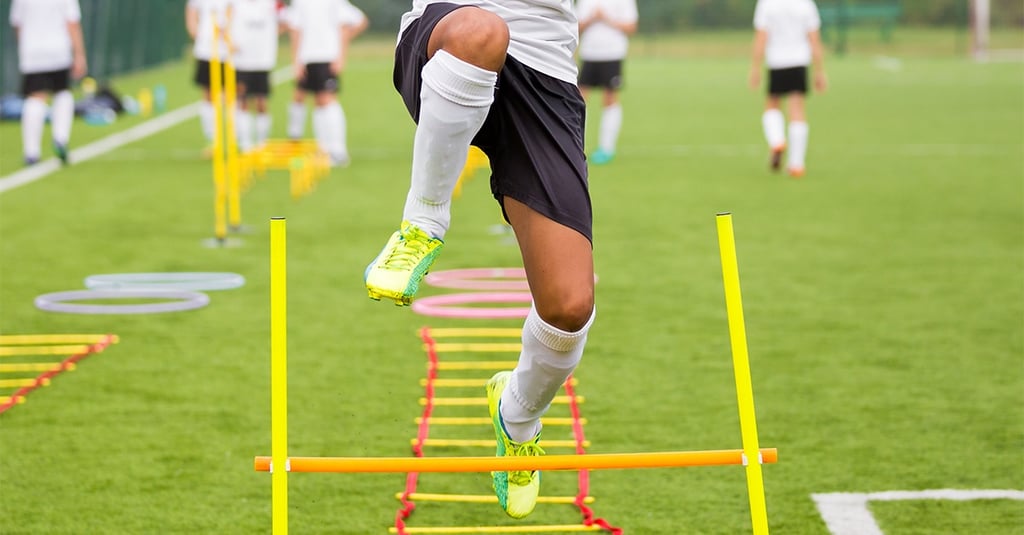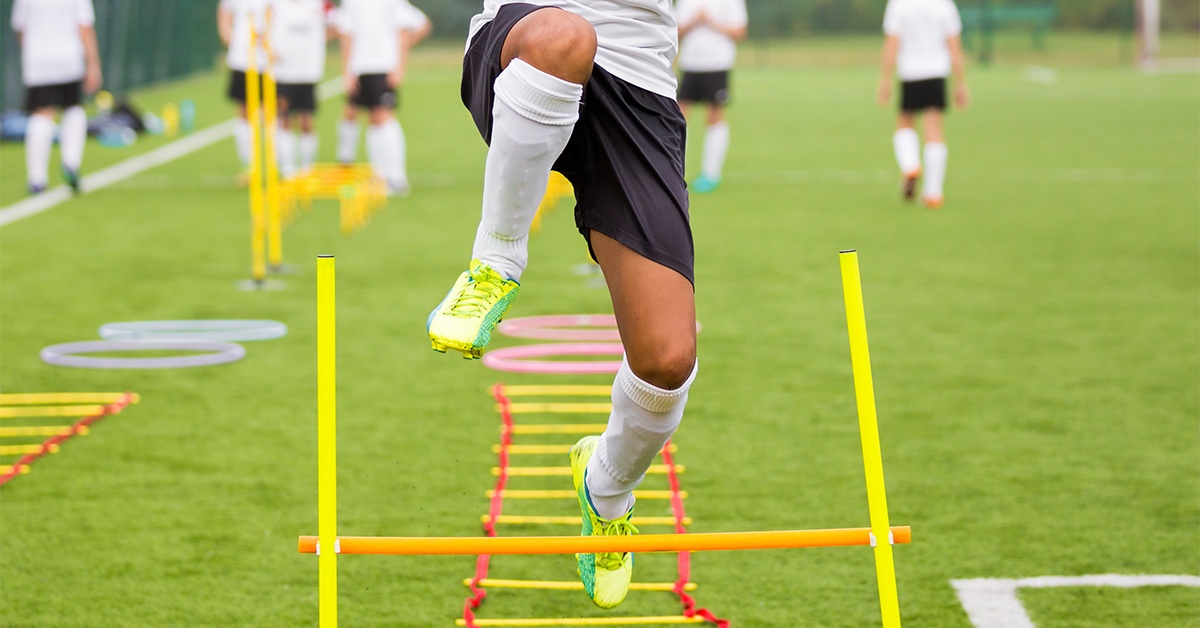Soccer-Specific Training to Prevent a Player's Worst Nightmare

Soccer players all over the world cringe at the thought of tearing their anterior cruciate ligament (ACL). Unfortunately, this season-ending injury is very common amongst soccer players. In the United States alone, there are between 100,000 and 200,000 ACL ruptures per year (Friedberg). The ACL connects the femur (thigh bone) to the tibia (shin bone) and serves as an important stabilizer in the knee to prevent bones from over-extension and over-rotation. However, typical movements in soccer can put an immense amount of stress on a player’s knee causing injury. An ACL rupture is certainly one of the most serious knee injuries in soccer, but after surgery and rehabilitation athletes can return to play within 6-12 months. Additionally, soccer specific training reduces the risk of injury.
ACL Injuries: Classification, Symptoms, and Diagnosis
ACL injuries can be classified into two types: contact and non-contact. A contact injury involves a direct blow to the knee from a tackle. Alternatively, non-contact injuries are more common and usually involve an “awkward” movement when the knee is near full extension and the femur rotates over a fixed tibia. When the knee is extended and quickly collapses inwards, the ACL is placed under considerable strain and can tear. During play, this could occur when a player plants their foot and changes direction, lands from a jump, or rapidly stops running. Athletes might hear a ‘pop’ sound when it ruptures and will experience immediate pain, swelling, and knee instability. A torn ACL is diagnosed through a physical exam and can include x-ray and MRI screenings.
Psychological Impact
Not only is ACL reconstruction surgery painful, the recovery is long and the goal of returning to the field seems unimaginable. The psychological and emotional impacts of an ACL injury are often overlooked and can have a detrimental effect on a player’s performance. Data from both the NCAA and the NATA indicates that athletes who suffer an ACL injury tend to experience more depression and anxiety, have a fear of re-injury, have decreased sport satisfaction, and see a decrease in GPA (Recovery from ACL Surgery: The Psychological Component). There are several ways coaches and athletic trainers can help athletes heal emotionally during the recovery process.
Goal Setting: Injured athletes should create new goals that are specific, measurable, realistic, individualized, and centered on performance. Keeping track of these goals and achievements relieves stress and increases confidence.
Stress Management: Coping with stress and anxiety is an essential part of psychological recovery. Imagery and learning different relaxation techniques can relax the mind and prevent a fear of re-injury.
Social Support: Having a strong network of friends, teammates, coaches, and trainers can help the athlete understand the rehabilitation process and combat negative thoughts.
The combination of physical rehabilitation and psychological interventions helps to reduce recovery time, improve coping skills, and prevent re-injury anxiety. Ultimately, this multifaceted approach will help athletes make a smoother and quicker transition back onto the field.
Why are Females More Susceptible to ACL Injuries?
Female players are 4-8 times more likely of sustaining a non-contact ACL injury and there are a number of theories to explain this alarming statistic (US Youth Soccer).
Anatomical differences: Female soccer athletes differ from male athletes because of the alignment of their hips and knees. This difference is associated with knee valgus alignment, which increases the likelihood of ACL injury especially during high velocity movements. Additionally, females have a smaller notch for the ACL to attach to the femur and an overall smaller ACL placing them at greater risk of injury.
Different landing patterns: Females have a higher tendency towards risky landing patterns. In particular, females frequently land on straighter knees, which places more stress on ligaments and the knees in general. Female knees also tend to "buckle" and turn inwards, which directly stresses the ACL.
Hormonal differences: Developing studies also have indicated that hormonal changes in women can impact the likelihood of sustaining an ACL injury.
These factors are especially important because they’re modifiable and can be prevented through proper technique and soccer specific training.
Aims of a Successful ACL Prevention Program
Maintaining a strong and effective soccer specific training program is paramount to ensure a successful, injury-free soccer season. Effective ACL injury prevention programs focus on correct techniques for cutting and jump landing, quality and speed of footwork, balance, and strength (particularly for core, hips, and legs). A program like this should be incorporated in everyday training routines and should include:
Warm-up: forward jog, zigzag run, backward jog. To learn more about a dynamic soccer warm-up check out this article.
Stretch: calves, quads, figure four hamstrings, inner thigh, hip flexors.
Strengthening: walking lunges, monster walks, Nordic hamstrings, single toe raises.
Plyometric: lateral hops over a cone, forward/backward hops over a cone, single leg hops over a cone, vertical jumps with headers, scissors jumps.
Agility: shuttle run forward and back, diagonal runs, bounding run.
Recap
An ACL injury is one of the most common and devastating injuries an athlete can sustain. However, coaches and athletes that implement soccer specific training are reducing the rate of ACL injuries by 30-40 percent (U.S. Soccer). Injuries are never 100% preventable, but providing players with soccer specific training programs ensures they are taking the necessary steps to keep their bodies healthy in order to perform at the highest level. Here's a deeper look at designing soccer specific training.
Related Posts

The Best Bench Press Variation You’re...
This post is part of our Coaches Corner series with Taylor Rimmer. Taylor is NSCA-CPT, StrongFirst...

Does Powerlifting Harm Heart Health?
A recent study has discovered that a 12-week supervised strength training program (SSTP) may result...
-1.png)
Barefoot Running: Is It For You? |...
Run Free: Consider Less Cushion
Updated October 2020:
With more athletes looking for ways to...


